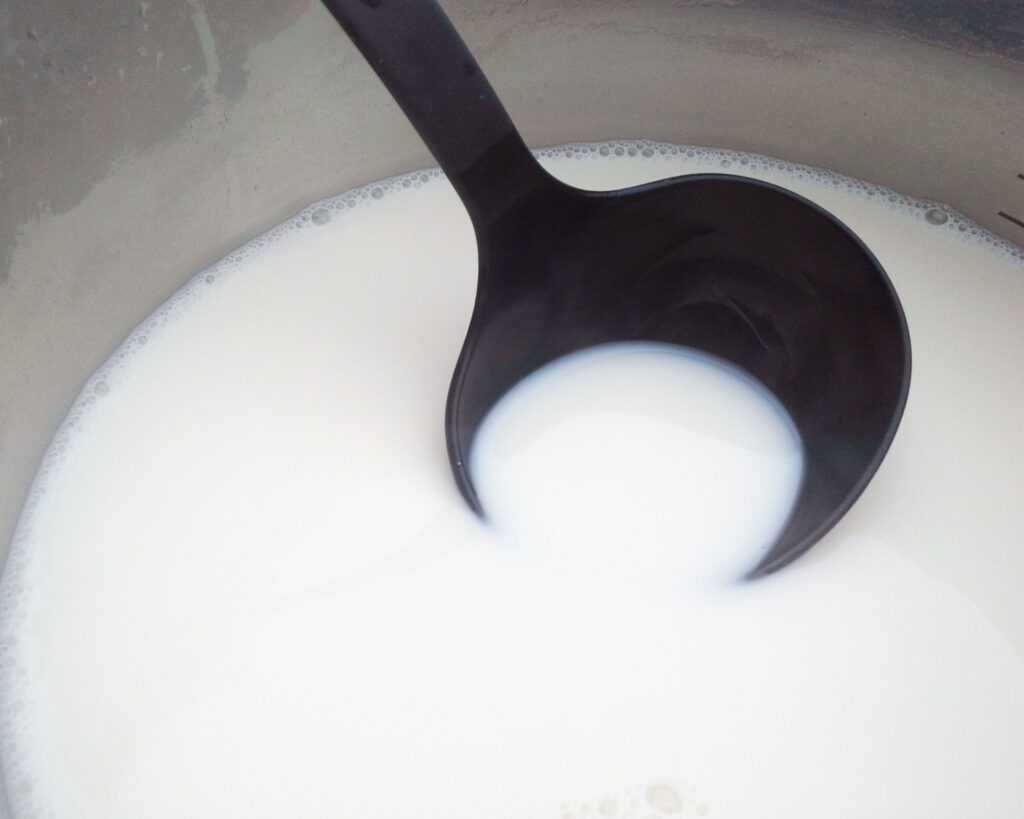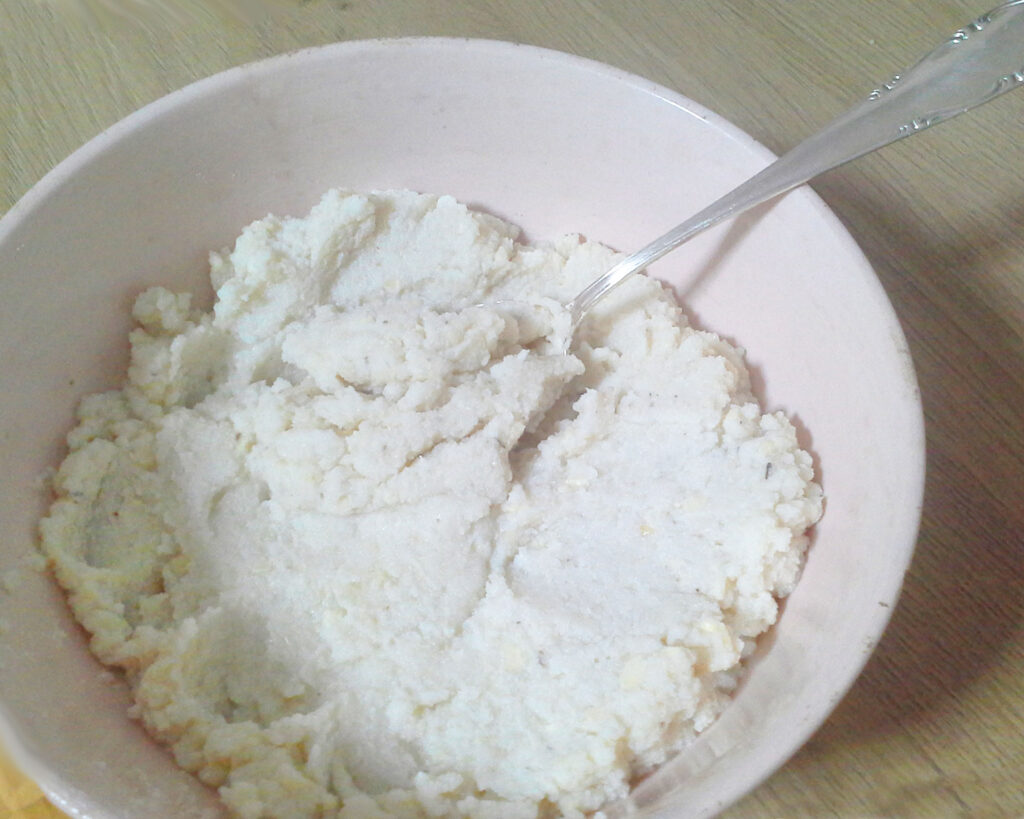
Home made Soymilk

Scroll right to the recipe
A friend who had lived in Singapore and Malaysia told me many years ago that he used to drink fresh warm soy milk for breakfast. He said that every morning an old couple would roll the steaming hot milk on their wheel barrow through his street.
I cannot say why this story has stuck in my mind for so many years, I still picture an old wrinkly Asian lady preparing the beverage in a big pot on a wood fire stove in a tiny dark kitchen.
Now back to 2021, it is end of November and I am in Europe, it has been a chilly cold week and the first snow came down two days ago. My body was craving a cup of hot nourishing tea – and so, finally, I decided to make my own soy milk.
Where is Soy coming from?
Soy milk has been around for thousands of years in Chinese culture; it started as a nutritious food source for the people, because it was cheap. It has been researched that uncultivated soy looked quite different compared to today’s beans 7000 years ago. The purple flowers were small and the beans dark colored and tiny. Around 1500 B.C. the beans were cultivated, yellow and bright. They resembled already today’s crop. Asians started to prepare Tofu, Tempeh, and other fermented byproducts.
I remember that in the 70s Soy was the first accessible plant milk in health food stores and Asia markets before the trends of plant based milks started. In those times we were allowed to call it “Milk” which has changed. According to EU law, only the snow-white liquid that flows from the udders of cows, sheep, goats and mare may be called milk. Same in the US, therefore it is now called soy mylk or soy beverage, however, my auto-correct does not like the “mylk”.
How much Soy milk is healthy?
Over the years, soy milk and other soy products have been received a bad reputation. Besides to heavy chemical spraying and GMO manipulation, its health benefit was questioned. Interesting enough — the findings in studies are conflictive. Soy is exalted as a health food by some, with claims of taming hot flashes, warding off osteoporosis, and protecting against hormonal cancers lake breast and prostate. At the same time, soy is shunned by others for fear that it may cause breast cancer, thyroid problems, and dementia, and claim that only fermented soy products should be consumed on a regular base.
Isoflavones, which are found in soy, are plant estrogens. High levels of estrogen have been linked to an increased risk of breast cancer. However, food sources of soy don’t contain high enough levels of isoflavones to increase the risk of breast cancer. There is controversy and it has never been clarified to full satisfaction. Speaking entirely about myself, I have also switched to other seed- and nut-milks and rarely consume soy milk.
Enough story, google and research for yourself.
This is what I learned:
- Always use organic and high quality beans.
- Soak in at least 5x amount of water, this is crucial!
- You may blend the beans before or after boiling, neither one is traditionally wrong
(you will read more about it in the recipe). - Choose a big pot! Soy milk produces a thick and rich foam.
- Keep the delicious milk skin — consume it fresh or dried.
- Keep the pulp, it is called Okara, it is great for muffins, pate or even stir fry.

Preperation time 30 minutes
Cooking time 25 minutes
You need a bowl, a big pot, a blender, cheese cloth (or a muslin bag or nut bag) and a whisk.
INGREDIENTS
- 1 Cup Organic Soy Beans
- 8 Cups of water (200 g beans to 12 cups Water is what I did)
- optional: natural salt, a sweetener of your choice
INSTRUCTIONS

- Cover 1 Cup of Soy Beans with at least 5 times the water and let them soak for at least 8 hours, better over night. You will have up to 2.5 cups after soaking.
- Rinse well and drain the soy beans.
- Put the soy beans with about 3 Cups of water into a blender and blend on low for 30 seconds then high for about 1 minute. Add slowly more water and keep blending. If your blender is small, blend in batches and pour the remaining water directly into the pot.
(There are 2 options: you may strain the beans and boil the milk, or you may boil the puree and strain after boiling, both options are traditionally used. Since I wanted to use the pulp for another recipe, I decided to strain after boiling). - Pour the soy puree into a big pot and cook on medium heat.

- The soy milk will foam up while heating up, don’t get fooled, it’s not really boiling. It will take about 10 – 15 minutes to come to a full boil. The foam will be thick and rich. Don’t stop stirring, the bottom gets burnt easily.
- Let simmer for more 3 minutes.

- Filter the mixture through a muslin cloth, cheese cloth or a fine sieve. Make sure you squeeze the pulp dry. Be careful, the milk is very hot.

- Add a pinch of salt and up to 2 TSP of sweetener if desired to mimic the natural sweetness of dairy milk. Bring the milk to a gentle boil for another 5 minutes.

- Serve hot or pour into bottles to store in the fridge.

My milk was so delicious and tasty that I could not believe that I did not prepare it earlier. I will also experiment with the thickness and reduce the liquid when boiling a second time.
Here is the recipe for a wonderful Un-caffeinated Chai.